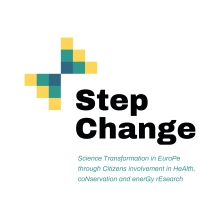Enhancing S&T cooperation between the EU and Eastern Europe as well as Central Asia: a critical reflection on the White Paper from a S&T policy perspective
Section: Research Policy & Development
This article reflects the main findings of the ‘White Paper on opportunities and challenges in view of enhancing the EU cooperation with Eastern Europe, Central Asia and South Caucasus in Science, Research and Innovation’, which was released in April 2012, from a science and technology (S&T) internationalisation policy perspective. In the ‘Internationalisation of R&D from an S&T policy perspective’ section of this article, the ongoing discourse on internationalisation of research and development (R&D) is discussed from an S&T policy perspective. In the ‘S&T cooperation between the EU and Eastern Europe as well as Central Asia since the early 1990s’ section, the development of S&T cooperation between the EU and EECA is described as a historical snapshot since the early 1990s. In the ‘Recent S&T internationalisation efforts of Eastern European and Central Asian countries’ section, special emphasis is given to the current EECA countries' dispositions towards R&D internationalisation. For a structured overview, the EECA region is disaggregated in three subregions, namely, (a) Russian Federation, (b) Eastern European countries (without Russia) and (c) Central Asian countries. To better position the R&D internationalisation policies of the region under scrutiny within the overall state-of-the-art of S&T, the ‘Current state of S&T in the Eastern European and Central Asian countries’ section compares main S&T indicators of the EECA countries. The ‘The White Paper recommendations in the light of international S&T cooperation policy objectives’ section finally condenses the major recommendations elaborated during the White Paper consultation process and puts them into the context of international S&T cooperation policy. The question is raised on what international cooperation can contribute to improving S&T in the EECA region and which approaches are deemed most adequate to support this. The analysis shows that most recommendations suggested in the White Paper directly target the S&T policy (delivery) system, which is put into an explicit actor's role. Science diplomacy is the identified predominant driver for deepening international R&D cooperation with the EECA region. The main instruments used are international dialogue, exchange and learning platforms, which are supported by the European Commission according to the EU's subsidiarity principle. Other S&T internationalisation policy objectives play a role too, especially if a more regionally differentiated perspective is taken into account.
Keywords:
R&D internationalisation; Science diplomacy; Eastern Europe; Central Asia; ERA international dimension
Access: http://www.innovation-entrepreneurship.com/content/1/1/3
Authors: Schuch, K., Bonas, George (International Centre for Black Sea Studies and National Hellenic Research Foundation, 4 Xenophontos Street, Athens, 10557, Greece) Sonnenburg, Jörn (International Bureau of the Federal...
Result of this Event: INCO-NET CA/SC : Policy Stakeholder Conference in Astana
Related Articles:
Tags: Central Asia, Eastern Europe, European Research Area, internationalisation, research policy, RTDI cooperation, science diplomacy
Category: Zeitschriften
Publication Date: 2012-08-08
Procurement: Online (download)












































